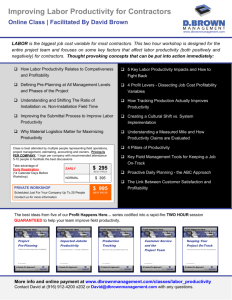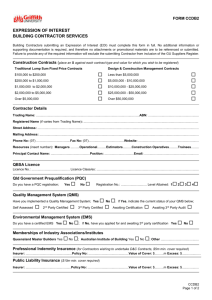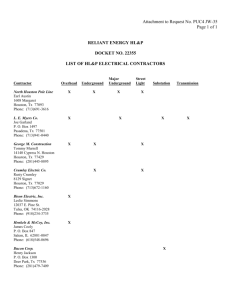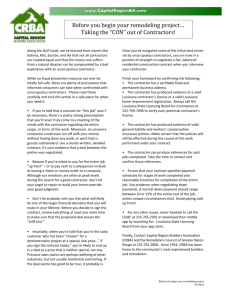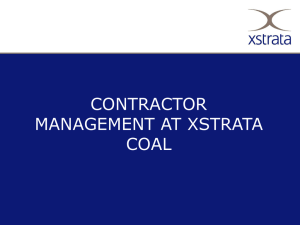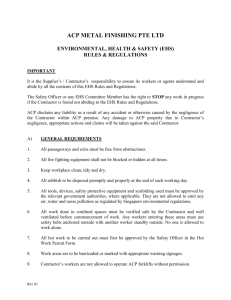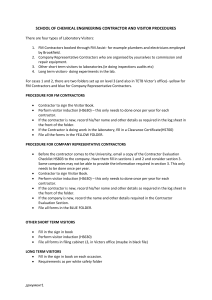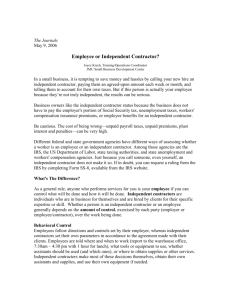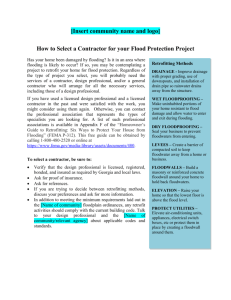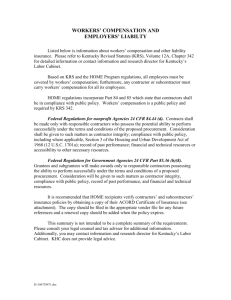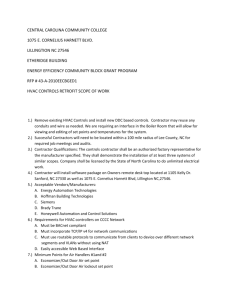Construction-Environmental-Management-Plan
advertisement
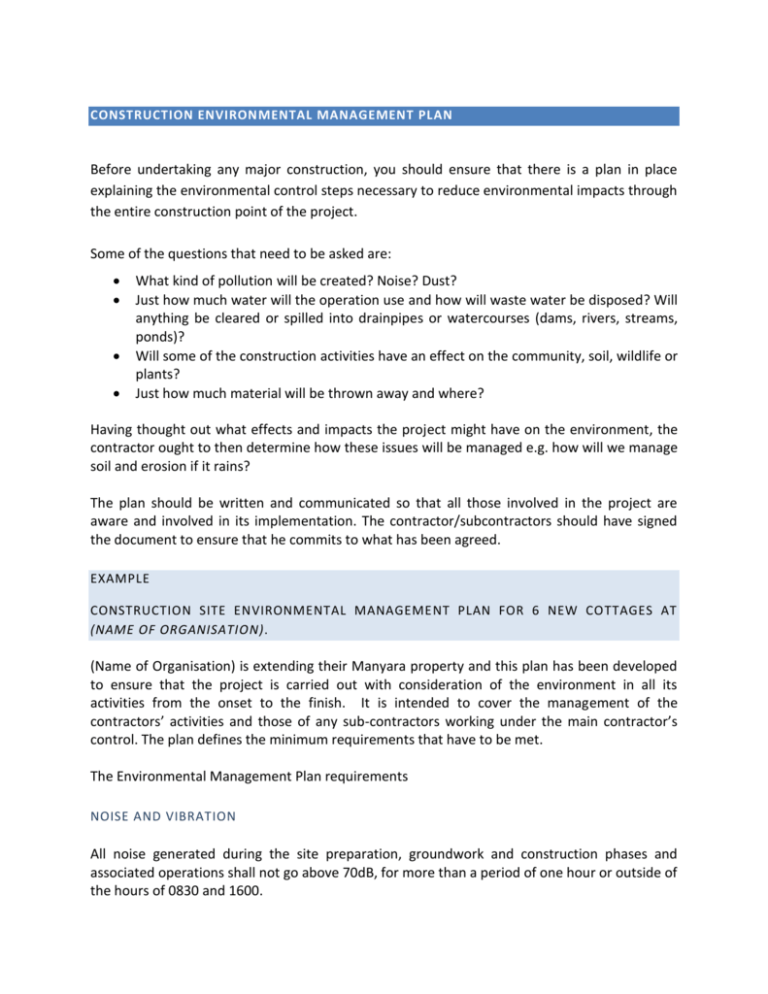
CONSTRUCTION ENVIRONMENTAL MANAGEMENT PLAN Before undertaking any major construction, you should ensure that there is a plan in place explaining the environmental control steps necessary to reduce environmental impacts through the entire construction point of the project. Some of the questions that need to be asked are: What kind of pollution will be created? Noise? Dust? Just how much water will the operation use and how will waste water be disposed? Will anything be cleared or spilled into drainpipes or watercourses (dams, rivers, streams, ponds)? Will some of the construction activities have an effect on the community, soil, wildlife or plants? Just how much material will be thrown away and where? Having thought out what effects and impacts the project might have on the environment, the contractor ought to then determine how these issues will be managed e.g. how will we manage soil and erosion if it rains? The plan should be written and communicated so that all those involved in the project are aware and involved in its implementation. The contractor/subcontractors should have signed the document to ensure that he commits to what has been agreed. EXAMPLE CONSTRUCTION SITE ENVIRONMENTAL MANAGEMENT PLAN FOR 6 NEW COTTAGES AT (NAME OF ORGANISATION). (Name of Organisation) is extending their Manyara property and this plan has been developed to ensure that the project is carried out with consideration of the environment in all its activities from the onset to the finish. It is intended to cover the management of the contractors’ activities and those of any sub-contractors working under the main contractor’s control. The plan defines the minimum requirements that have to be met. The Environmental Management Plan requirements NOISE AND VIBRATION All noise generated during the site preparation, groundwork and construction phases and associated operations shall not go above 70dB, for more than a period of one hour or outside of the hours of 0830 and 1600. No explosives are to be used on the site. AIR QUALITY Contractors are expected to take suitable measures to control and minmise the presence of air borne dust during construction. Completed earthworks should be planted with vegetation as soon as practical. There is to be no burning of materials on site. ARCHAEOLOGY AND CULTURAL HERITAGE Contractors must maintain a watch for any archaeological finds during excavation work, and inform the Manager immediately if any are suspected or found. VISUAL IMPACT Contractors’ compounds should be located within the development area and kept respectable at all times. The contractor must recognize that there are other overlooking nearby residential properties. PROTECTION OF THE ECOLOGY Existing trees and vegetation are to be protected and retained wherever possible. They will be clearly identified and protected from construction activity. If any trees need to be removed the contractor must ensure that there are no nesting birds or bats present. The part of the tree most susceptible to damage is the root system. In order to avoid damage the root protection area should be determined and this should be taken as the minim area which should be left undisturbed. PROTECTION OF WATER SOURCES Potential risks to water course contamination must be avoided. DELIVERIES When fuels or hazardous materials are being delivered, they must be supervised by a responsible person to ensure that containers are not overfilled and spillage does not occur. Any spillage must be reported and cleaned up according to correct procedures. A spill kit should be made available in this area e.g. sand/sawdust, bucket, spade. STORAGE Oils, chemicals, cement, lime, cleaning materials and paint have the potential to cause serious pollution. All fuel, oil and chemicals must be stored on a solid base, with a bund and secured. The contents of any tanks must be clearly marked. SILT Water containing silt e.g. from excavations, stock piles, plant and wheel washing, must never be pumped directly into a water course, or drains. A suitable option will be made available e.g. a grassed area. REFUELLING All refueling must take place in a designated area, preferably on an impermeable surface away from any drains or watercourses. A spill kit should be available in this area. CONCRETE Concrete is very alkaline and corrosive and can have a serious impact on watercourses. Special care must be taken to ensure that when washing out the concrete mixing area, the washings do not flow into any drain or seep underground. WASTE A site waste management plan must be provided by the contractor including: Who is to be responsible for following the waste management plan What kind of waste will be produced How the waste will be disposed Where the waste will be disposed in line with environmental regulations Identification of any hazardous waste and how it will be disposed of. Training for all employees on the correct waste disposal methods Measures to ensure the efficient use of materials and reduction of waste produced. Waste must be minimized wherever possible Rubbish, debris surplus materials etc must be removed regularly and the site must be kept clean and tidy. Records of waste disposal must be available e.g. receipts for the local dump. A final clean up will be made ensuring that all site waste is removed, and the area is returned to a pristine site. ROAD MANAGEMENT All roads into the construction site must be planned in advance to ensure minimal disturbance and erosion. Roads must be adhered to in order to avoid the excessive creation of multiple tracks.
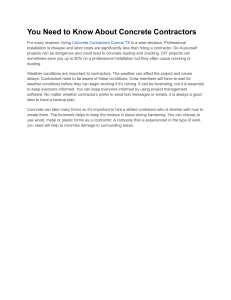


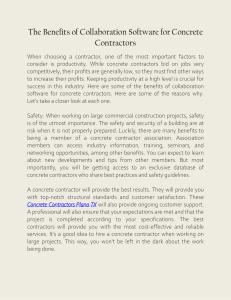
![From [Name] [Business Name] [Business Address] [Phone Number](http://s2.studylib.net/store/data/010062634_1-5404f95cf2a6b8966783293b2727cd16-300x300.png)

